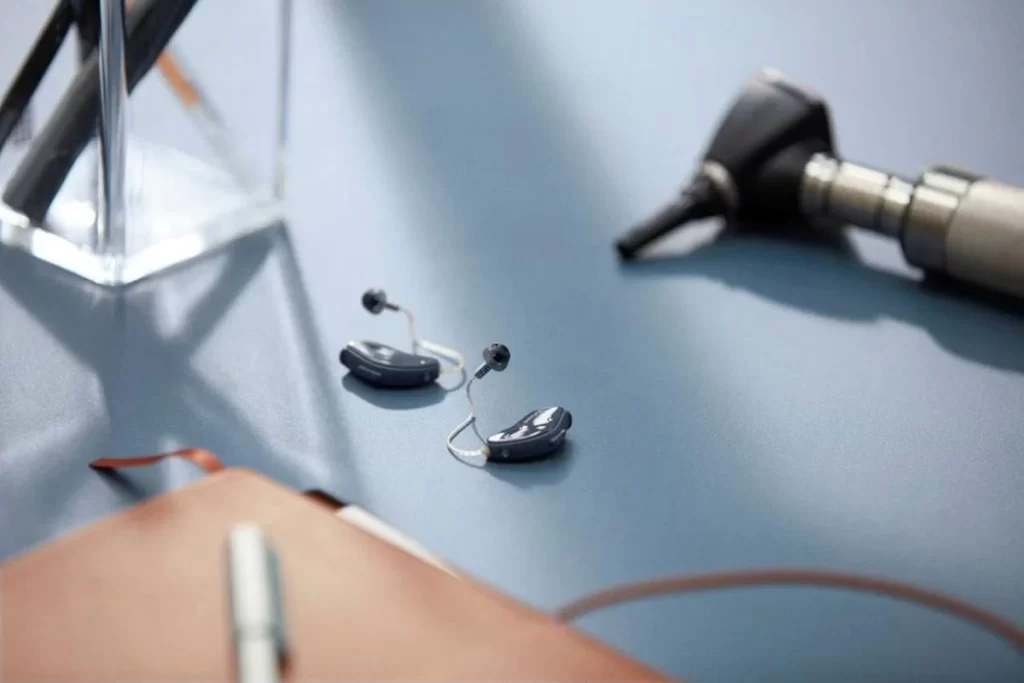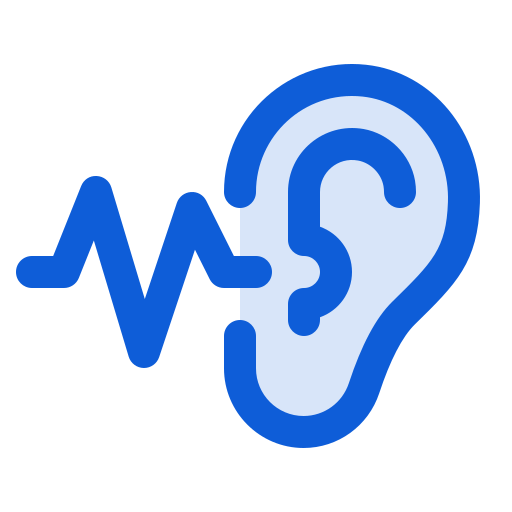Contents

World-Class Hearing Aid Technologies:
Meenakshi Speech and Hearing Clinic is equipped with cutting-edge ear technology and state-of-the-art computerized testing equipment. We offer sophisticated hearing aids and a fully furnished setup for audiological and speech tests. Our soundproof double room ensures accurate audiological evaluations, where patients respond to both sound and speech.
Understanding How We Hear:
Our ears and brain work together to receive and interpret sound impulses, starting with the outer ear collecting sound waves and transmitting them to the eardrum via the ear canal. Vibrations created by the sound waves cause movement in the middle ear’s three bones, particularly the stapes. This impacts the inner ear fluid and stimulates the cochlea, which contains hair cells that trigger nerve impulses sent to the brain. The brain processes these impulses into recognizable sounds.
What is a Hearing Aid?
A hearing aid is a battery-powered electronic device that amplifies sounds for those with hearing loss. It consists of:
- Microphone: Captures and converts acoustic sounds to electronic signals.
- Amplifier: Boosts the electronic signals.
- Receiver: Turns electronic signals back into sounds and delivers them to the ear.
Types of Hearing Aids:
- Behind The Ear (BTE): Hooks over the ear, resting behind it. An ear mold inside the ear canal receives amplified sound.
- Suitable for all ages and types of hearing loss.
- Visible but highly effective, with new streamlined versions available.
- Recommended for severe to profound hearing loss.
- Open Fit/RIC (Receiver In Canal): Small devices using a tube or wire to send sound through a dome or speaker in the ear canal.
- Best for mild to moderate high-frequency losses.
- Less visible, doesn’t plug the ear canal.
- In The Ear (ITE): Custom-fitted aids that sit inside the ear.
- Twin microphone design improves sound quality.
- Best for mild to moderate hearing loss.
- In The Canal (ITC): Custom-fitted for partial insertion into the ear canal.
- Suitable for mild to moderate hearing loss.
- Less visible and easy to use with the phone.
- Completely In Canal (CIC): Fully fits inside the ear canal.
- Minimally visible and well protected from wind noise.
- Ideal for mild to moderate hearing loss.
- Invisible In Canal (IIC): Deeper fitting than CIC and practically invisible, pulled out with a nylon thread.
- Custom-made for a perfect fit.
- No hard edges for a comfortable feel.
Hearing with both ears
The Importance of Hearing with Both Ears
Hearing with both ears, known as binaural hearing, offers key benefits such as:
- Understanding Speech in Noise: Two ears help the brain pick up speech more easily in noisy environments and enable selective listening to focus on important conversations.
- Locating Sound: Binaural hearing helps identify where sounds originate, making activities like crossing streets safer.
- Avoiding the Head Shadow Effect: Sounds coming from your ‘bad side’ are often muffled due to the head blocking the way. Hearing with both ears helps minimize this issue.
- Enjoying Music: Binaural hearing enhances music enjoyment by delivering a fuller, more natural sound.
- Speech Development in Children: Hearing with both ears supports better speech understanding and language learning, crucial for childhood development.
- Bimodal Hearing: Combines a cochlear implant and hearing aid for improved speech understanding, music perception, and overall satisfaction.
- Bilateral Hearing Implants: Ideal if a bimodal solution is insufficient. They may significantly improve speech comprehension, especially for children, by providing input to both ears for better auditory development.
Real Ear Measurement (REM)
Real ear measurement (REM) measures sound pressure levels in the ear canal while wearing a hearing aid. Using a silicone probe tube and an external microphone, REM ensures the hearing aid provides appropriate amplification for the patient’s hearing loss. This procedure is crucial as it verifies the hearing aid’s gain based on pitch and volume, helping meet the prescription accurately. Research shows that without REM, patients may not receive sufficient amplification.
Importance of Real Ear Measurement (REM):
- Limited Usage: Only 30% of audiologists and hearing aid dispensers use REM.
- Professional Recommendation: ASHA and AAA recommend REM as the preferred method to verify hearing aid performance.
- Accuracy: The most reliable way to assess the benefit provided by hearing aids.
REM Responses:
- REUR: Measures sound pressure level (SPL) in the open ear canal.
- REAR: Measures SPL in the ear canal with the hearing aid on.
- REIG: Calculates hearing aid gain by subtracting unaided from aided responses.
- REOR: Measures SPL with the hearing aid in place but turned off.
- RECD: Compares SPL between a real ear and a 2cc coupler using the same signal.
Why Perform Real-Ear-to-Coupler Difference (RECD) Measurements?
- Accurate Conversion: Converts assessment data from dB HL to dB SPL for precise calibration.
- Target Conversion: Transforms real-ear targets to 2cc coupler targets for better hearing aid selection.
- Output Prediction: Predicts real-ear output from the 2cc coupler within ~2 dB, ensuring accurate fitting.
- Tailored Fitting: Accounts for unique ear and earmold characteristics to minimize fitting errors.
- Controlled Response Shaping: Allows shaping of hearing aid responses in controlled conditions.
- Efficiency: Reduces patient time and effort needed for fitting.
Consult our audiologist to explore the best solution for your needs.

